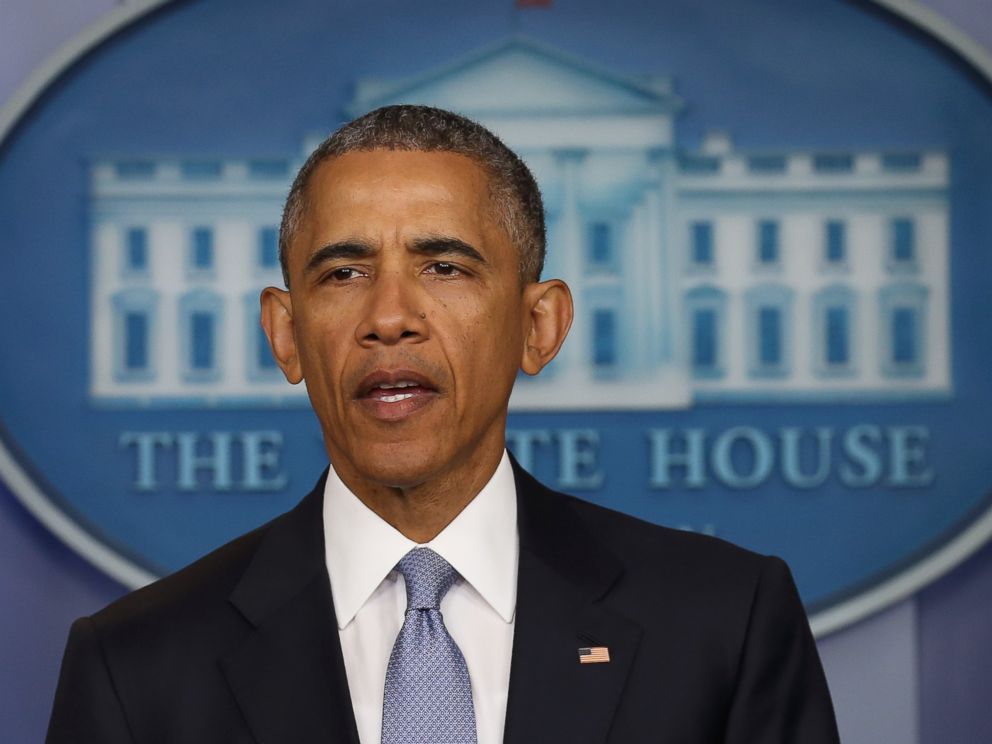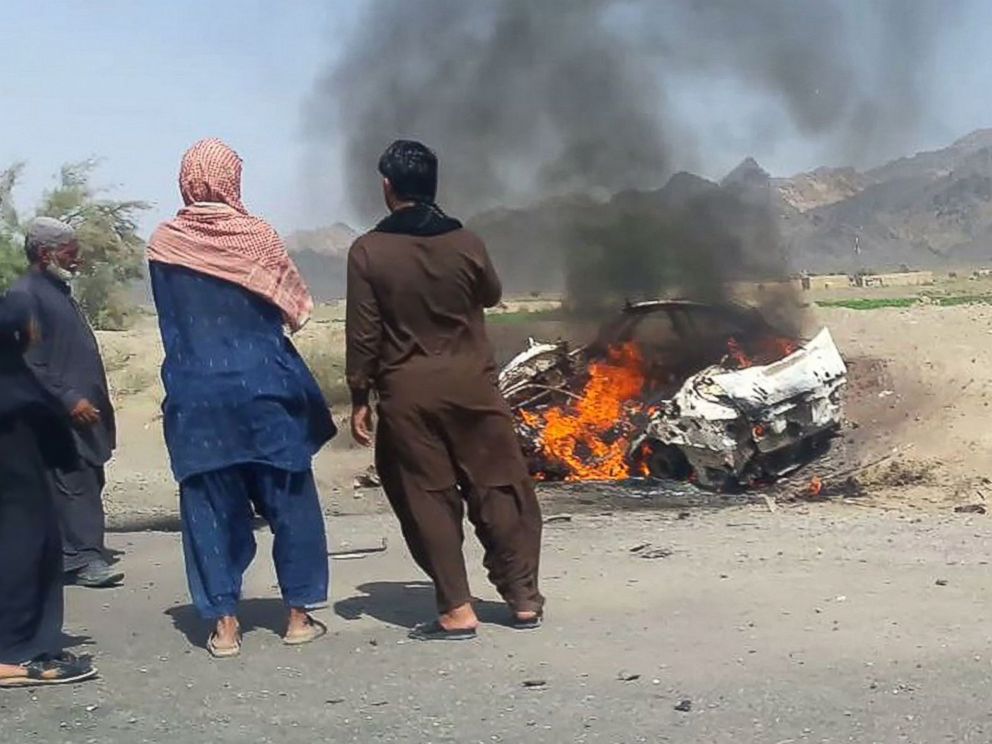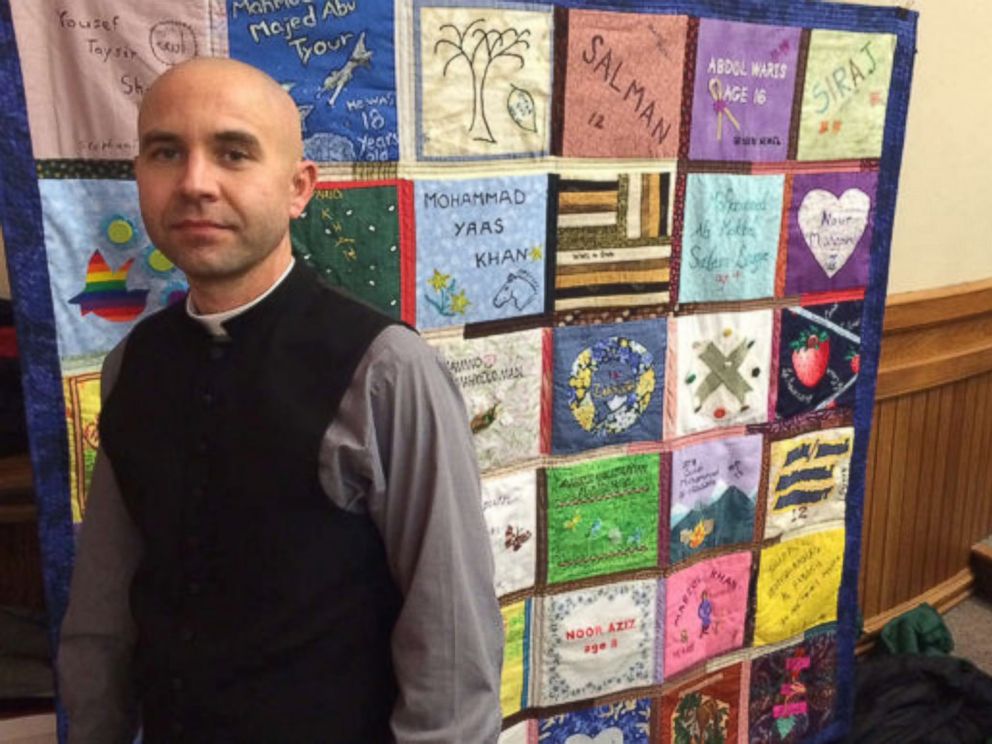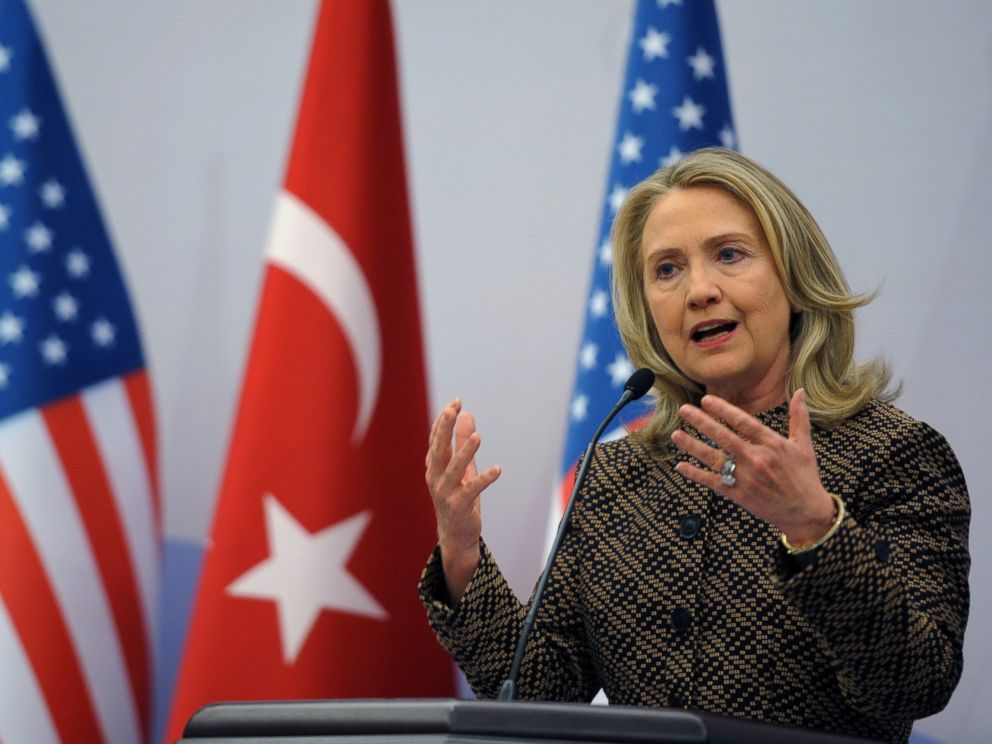The Army Chaplain Who Quit Over ‘Unaccountable Killing’ of Obama’s Secretive Drone Program
By MICHAEL EDISON HAYDEN
ABC News
As a witness to the removal of fallen U.S. troops from Afghanistan, Army Chaplain Christopher John Antal can’t recall a time when that solemn ceremony wasn’t conducted without the presence of drones passing along the horizon.
They were sleek and quiet, making a gentle humming noise as they flew over the flight lines — where aircraft can be parked and serviced — of the Kandahar airfield in Afghanistan, where he was stationed in 2012. Not everyone had access to the flight lines, according to Antal, but he was responsible for participating in dignified transfer ceremonies, also known as ramp ceremonies, which were set there to greet the caskets of fallen service personnel as they were returned to base, en route to the U.S. On these occasions, he would watch the drones drift in and out, loaded with Hellfire missiles.
“It was [a] stark contrast to the solemnity of what I was doing at the ceremonies,” Antal, aUnitarian Universalist minister, told ABC News about watching the drones during the ceremonies. “When I would watch them and think about where they had been and where they were going, it would break my soul.”

Mark Wilson/Getty Images
Barack Obama makes a statement at the White House, April 23, 2015, in Washington about the US drone strike that targeted a suspected al Qaeda compound in Pakistan but inadvertently killed an American and Italian being held hostage.

On April 12, Antal resigned his commission as an officer in the Army because of his conscientious objection to the United States’ drone policy. In a letter addressed to Commander-in-Chief Barack Obama, Antal wrote, “The executive branch continues to claim the right to kill anyone, anywhere on Earth, at any time, for secret reasons, based on secret evidence, in a secret process, undertaken by unidentified officials. I refuse to support this policy of unaccountable killing.” In doing so, he joined other previous members of the armed forces who have addressed Obama to criticize his drone strike policy, including four former members of the Air Force who penned a letter in November of 2015 warning the president that the strikes “served as a recruitment tool similar to Guantanamo Bay.”
The White House has defended the use of force in certain situations. “Since his first day in office, President Obama has been clear that the United States will use all available tools of national power to protect the American people from the terrorist threat posed by al-Qa’ida and its associated forces,” reads a 2013 fact sheet on policies and procedures for counter-terrorism operations outside the U.S. and areas of active hostilities.
Earlier this year, the Obama administration agreed to publish a redacted version of the so-called playbook for U.S. drone operations overseas. Antal hopes that with the publication, Americans will open their eyes to what is really happening with armed drones. The administration has not made clear when the documents will be released.
Civilian Casualties
The release of the drone playbook by Obama administration officials could provide the clearest window yet into a military program that has been shrouded in mystery since it began during George W. Bush’s administration in the early stages of the war in Afghanistan.
The numbers of civilians killed by U.S. drone strikes has been a source of controversy for years now, and precise data have been difficult to verify because of government secrecy on the subject and a scarcity of firsthand reports from areas where drone strikes take place.
In April, Obama told the press in reference to drone strikes, “There’s no doubt that civilians were killed that shouldn’t have been” — a change in tone from 2012, when he told an online forum, “Drones have not caused a huge number of civilian casualties.”
According to documents that a whistleblower provided to The Intercept in 2015, drone strikes frequently kill civilians, and “nearly 90 percent” of the people killed in airstrikes during Operation Haymaker, a five-month military operation in 2012 targeting al-Qaeda operations in eastern Afghanistan, were “not intended targets.” A current U.S. official and a former one who were involved in drone operations told ABC News at the time that the unintended targets were often suspected militants traveling to or at meetings with intended targets.
London’s nonprofit Bureau of Investigative Journalism, which says it pursues “research, investigations, reporting and analysis which is of public benefit,” estimated that from 2004 to 2014, there were 2,379 casualties from U.S. drone strikes in Pakistan. Of the 704 people killed who have been identified by the bureau, only 295 were reported to be militants, meaning that about 58 percent were believed to be noncombatants.
The organization reported in 2012 that dozens of civilian rescuers and mourners at victims’ funerals were targeted in drone strikes in Pakistan.

AFP/Getty Images
Yemenis gather around a burnt car after it was targeted by a drone strike killing three suspected al-Qaeda militants, Jan. 26, 2015 between the Marib and Chabwa provinces, a desert area east of Sanaa.

In 2011, U.S. officials told ABC News that the bureau’s numbers were “way off the mark” but did not address the subject of civilian casualties killed in drone attacks.
New America, formerly the New America Foundation, a nonprofit public policy think tank inWashington, D.C., said the number of civilians killed in drone strikes in Pakistan is much lower. It estimated that in 403 strikes since 2004, 2,284 to 3,625 people were killed and that 7 to 14 percent of them were civilians, 5 to 12 percent were unknown and the remainder were militants.
Strikes in large-scale military operation theaters (Iraq and Afghanistan) are handled by the Pentagon, while the CIA is responsible for strikes elsewhere (for example, Pakistan, Yemen and Somalia), according to officials familiar with the drone program. But these officials said there is also some overlap in areas of responsibility.
The CIA referred ABC News to the National Security Council on the matter of civilian casualties due to U.S. drone strikes. The NSC referred ABC News to previous remarks by Obama about drone strikes.
The bulk of U.S. targeted drone strikes take place in Pakistan, according to data compiled by the Bureau of Investigative Journalism and New America, but also occur in countries like Yemen and Somalia, which do not border any country with which the U.S. is at war but are home to suspected militants. In 2013, Ben Emmerson, the United Nations’ special rapporteur on human rights and counterterrorism, supported Pakistan’s position that it did not consent to the U.S. policy of using targeted drone strikes on its soil, issuing a statement that the drone campaign “is therefore a violation of Pakistan’s sovereignty.”
That year, however, The Washington Post reported that top-secret CIA documents and Pakistani diplomatic memos demonstrated that top Pakistani officials tacitly supported the strikes.
Congress has not formally authorized military operations in any of those countries, with the exception of Afghanistan in 2001. Drone strikes are also conducted in Iraq in the fight against ISIS. Congress authorized military actions there in March 2003.
A diverse group of commentators, including representatives from the human rights organization Amnesty International and conservatives such as judicial analyst Andrew Napolitano, have speculated publicly that these strikes in Pakistan constitute war crimes because of the numbers of noncombatants killed and questions surrounding the legality of the operations.
CIA Director John O. Brennan has invoked the U.N. charter’s self-defense article as a legal justification for conducting airstrikes in countries with which the U.S. has not declared war.
That Obama — who as a candidate promised to run the “most transparent” presidential administration in U.S. history — has been secretive about one of the most central parts of his foreign policy has been a subject of frustration for critics like Antal.
Antal told ABC News that he lacked the expertise to comment on whether the drone strikes under Obama are war crimes but said that his desire as a conscientious objector was to bring targeted drone strikes to “a complete and total halt.”
In 2013 the White House defended the use of drone strikes against U.S citizens suspected of high-level terrorist activity but declined to detail the criteria for ordering such attacks.
“Sometimes we use remotely piloted aircraft to conduct targeted strikes against specific al-Qaeda terrorists in order to prevent attacks on the United States and to save American lives,” said Jay Carney, the White House press secretary at the time.
“We conduct those strikes because they are necessary to mitigate ongoing actual threats, to stop plots, to prevent future attacks and, again, save American lives. These strikes are legal, they are ethical, and they are wise,” he said.
Americans have been inadvertently killed by drone operations. In 2015 the White House admitted to accidentally killing an American al-Qaeda hostage in Pakistan, Warren Weinstein, along with an Italian hostage named Giovanni Lo Porto, in a drone strike. Adam Gadahn, who was described as the American mouthpiece of al-Qaeda, was killed in a drone strike last year in which he wasn’t the target.

This photograph taken, May 21, 2016, shows Pakistani residents gathering around a destroyed vehicle hit by a drone strike in which Afghan Taliban Chief Mullah Akhtar Mansour was believed to be travelling.

A Growing Sense of Disillusionment
Antal’s resignation concluded nearly eight years of service as an Army chaplain that began on Dec. 3, 2008, less than a month after Obama was first elected president. Inspired by Obama’s optimistic message as a presidential candidate, Antal said, he joined the Army with aspirations of being an agent of change.
Drones were on the periphery of his awareness at that time but loomed larger as he learned of the administration’s reliance on them in the war on terrorism. His concerns about the killings intensified when he arrived in Afghanistan in September 2012, and he publicly voiced them in a Veterans Day sermon Nov. 11, 2012, when he gave a lyrical sermon criticizing drones on his base in Afghanistan and posted it online so other ministers could read it.
“We made war entertainment,” he said in the sermon, “enjoying box seats on the carnival of death.”
Antal said that his superiors disagreed with his tactic and that he was called into the office of a general who told him to take down the sermon.
“He told me that my message did not support the mission,” Antal said.
He told ABC that he was released from active duty in January 2013 and was stationed in Fort Bliss, an Army post on the New Mexico–Texas border. He remained in the Army, holding out hope that Obama would reform his drone policy. When the Stimson Center, a nonprofit nonpartisan think tank in Washington, D.C., released a highly critical report this February titled “Grading Progress on U.S. Drone Policy” — around the same time that the Obama administration announced a $1 trillion revitalization of the U.S. nuclear program — Antal told ABC News that he felt “devastated” and began the process of leaving the Army for good.
The Stimson Center report was a follow-up to recommendations on U.S. drone policy made by the organization in 2014 under the direction of Rachel Stohl, an adjunct professor at Georgetown University. U.S. officials did not comment on the seriousness with which they took the center’s recommendations.

Bob Fernandez/Philadelphia Inquirer
Rev. Chris J. Antal, the minister of the Unitarian Universalist Congregation at Rock Tavern, attends the first national Interfaith Conference on Drone Warfare at Princeton Theological Seminary.

Antal said that in 2015, the Army revised a formal document describing the role of chaplains, asking them to “speak with a prophetic voice against issues of moral turpitude,” in his words, as an effort to discourage criticism of military policy. He worried that his views about drones could land him in a military prison if did not leave his post. The Army is still processing his resignation, which he estimates might take several months to complete.
A representative for the Army confirmed Antal’s claim of the policy change and told ABC News it was part of an effort to make the post more inclusive of the diverse religions represented by Army chaplains.
“The reference to a prophetic voice has a Judeo-Christian background and history. The concept of a prophet may not be common to other religions such as Buddhist or Hindu. The function of speaking truth to power by Army chaplains still exists in our regulation,” the representative said.
While discouraged by his experience in the Army, Antal told ABC News that he hopes that the release of the drone playbook can serve as an opportunity to shine a spotlight on a secretive and violent military policy and spur a public call for reform.
“I’m a man of hope and optimism,” Antal said about the administration’s promise to release the playbook. “There’s so much we don’t know about our president’s use of armed drones, and I’m hopeful that the American people can wake up to what is really happening with them.”
Missing From the 2016 Race
Antal said that a discussion about U.S. drone policy has not factored significantly in America’s presidential election and that the subject is not discussed enough in the mainstream press.
Donald Trump told “Fox and Friends” in December that he would “take out the families of terrorists.” In April he told Syracuse.com that he would use drones for surveillance on the United States’ borders with Mexico and Canada. According to the article, he said he would not advocate using armed or military drones in the U.S.
Hillary Clinton told the Global Terrorism Forum in Turkey in 2012, “We will always maintain our right to use force against groups such as al-Qaeda that have attacked us and still threaten us with imminent attack.”
She continued, “In doing so, we will comply with the applicable law, including the laws of war, and go to extraordinary lengths to ensure precision and avoid the loss of innocent life.”

AP Photo
PHOTO:In this file photo, Hillary Rodham Clinton speaks at news conference during the Global Counterterrorism Forum in Istanbul, June 7, 2012.

She has not spoken about drones at any length during her presidential campaign, but she is regarded by many political observers as more hawkish than Obama when it comes to foreign policy.
Bernie Sanders told ABC News in August that he would “not end” the U.S. drone program, but he has been more critical of it than Trump and Clinton.
In an interview with The New York Daily News editorial board in April, Sanders said that when “bombing wedding parties of innocent people and killing dozens of them,” the drone program is “not effective” and “enormously counterproductive.”
Antal told ABC News that he believes the lack of public debate about drones in an election year was “partly philosophical and partly psychological,” adding that the unmanned approach of “drone assassinations” enables the U.S. to wage war with fewer American casualties. And without American casualties, he said, the public can “ignore” violence abroad.
He said he “hopes to see greater empathy” among Americans for the victims of the U.S. drone program and is “deeply saddened by the numbing of our culture” to U.S.-led violence abroad.
“It’s becoming very easy for Americans to just go shopping and forget that this violence is happening,” Antal said.
